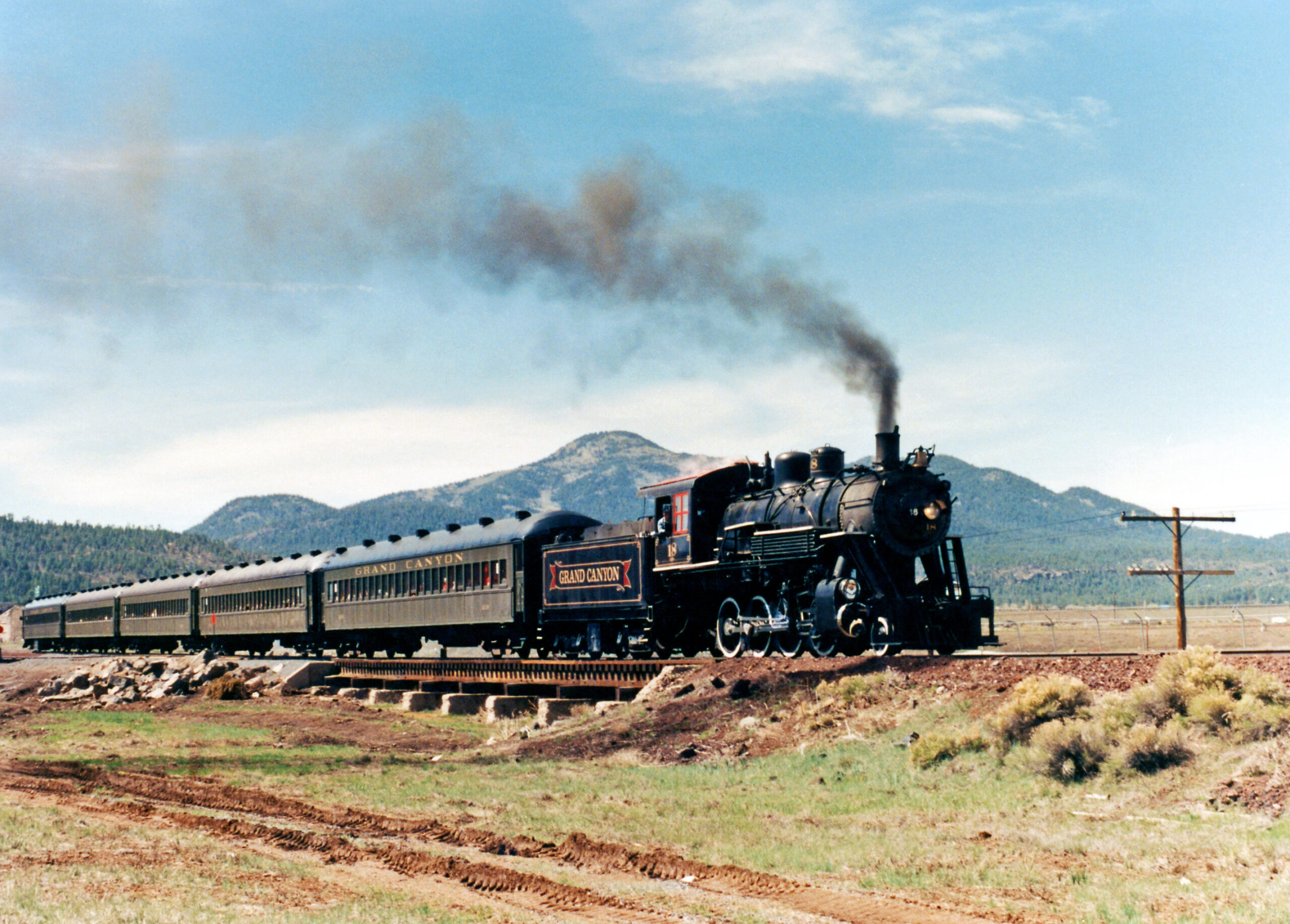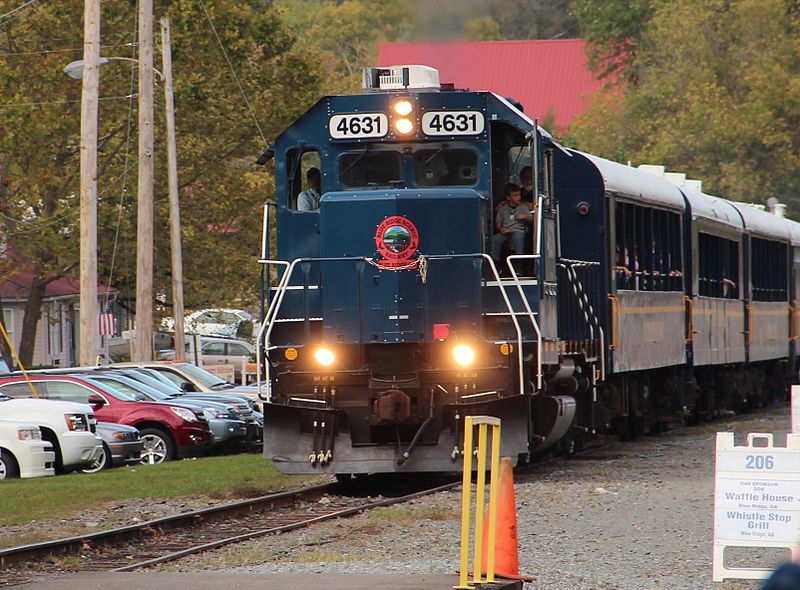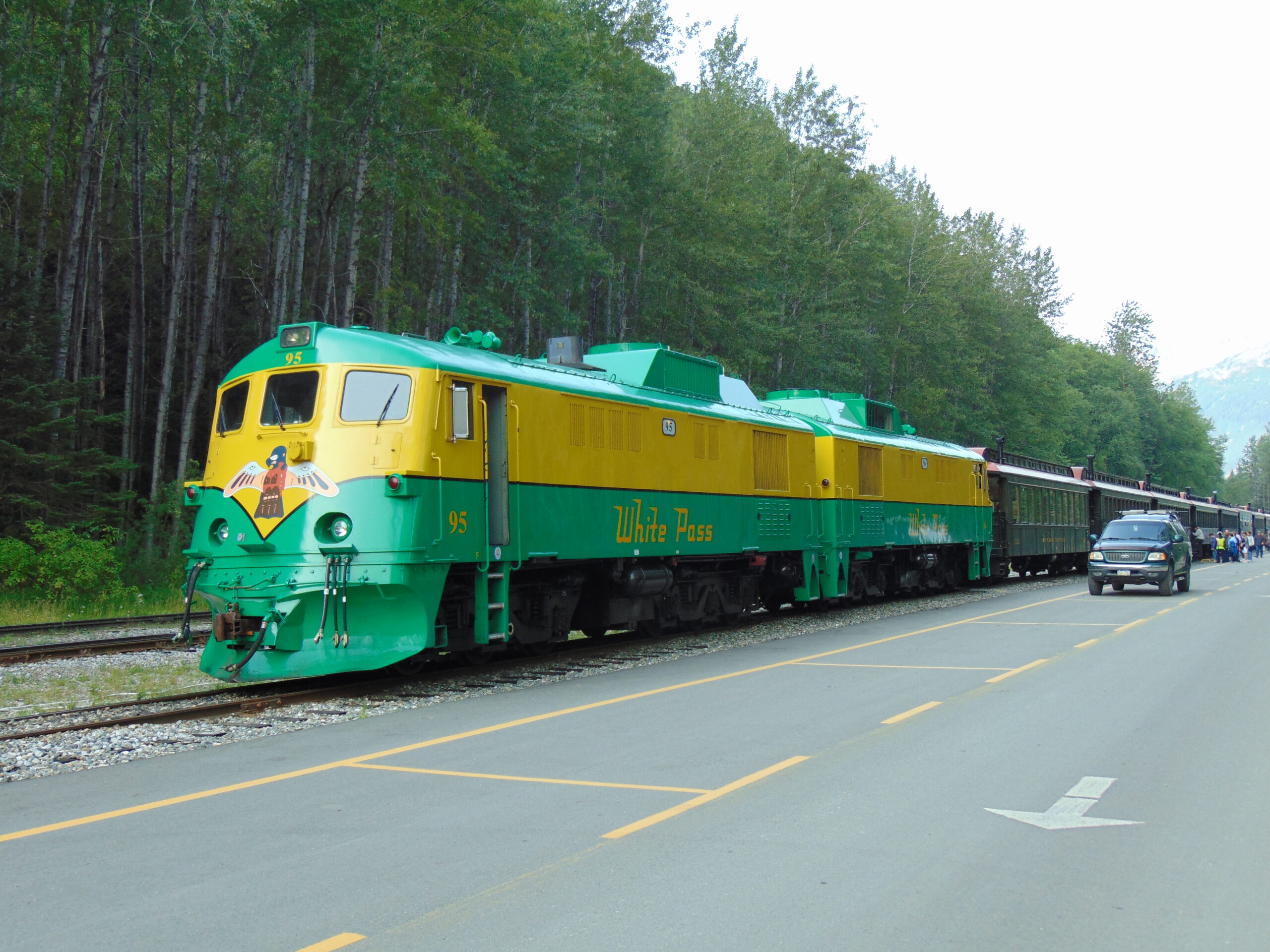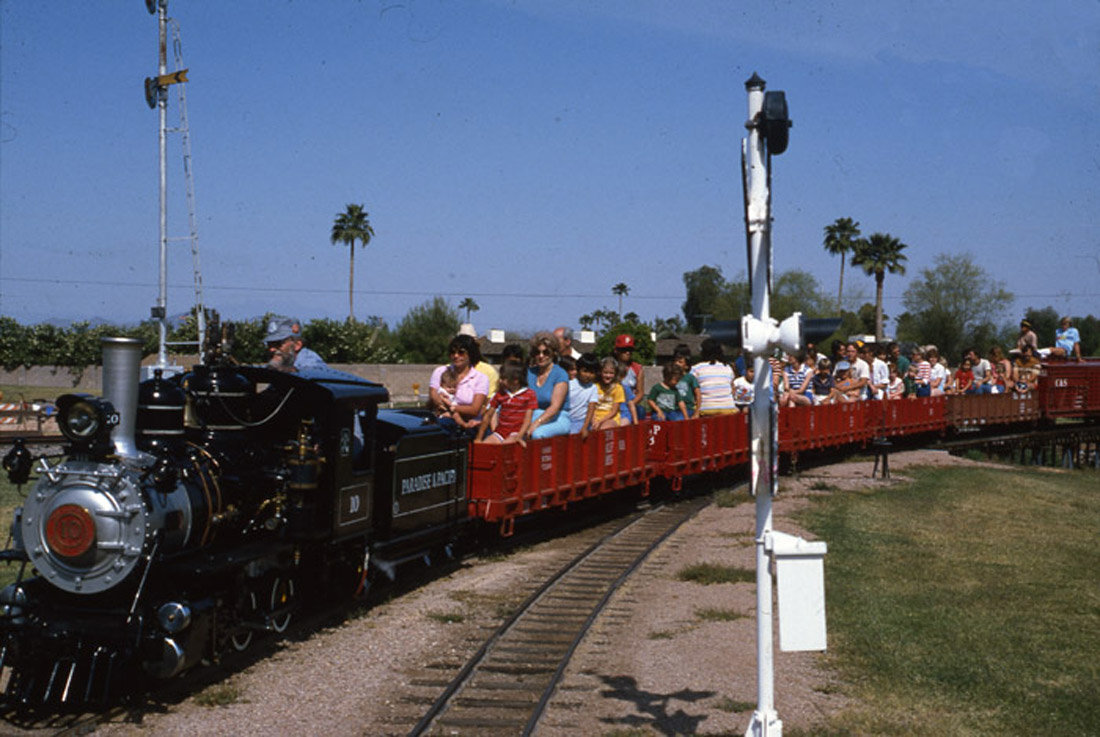Table of Contents
Quick Facts About the Grand Canyon Railway
| Railroad Name | Grand Canyon Railway |
| Website | https://www.thetrain.com/ |
| Train ride | Steam and diesel pulled train of heritage passenger cars, over an ex-Santa Fe branch to the Grand Canyon |
| Location | 233 N. Grand Canyon Blvd. Williams, AZ 86046 Google Map: https://goo.gl/maps/2tfsLANc6oQdQcYJ9 |
| Length of trip | 65 miles, 2 hours 15 minutes one way |
| Cost of single ticket | $82.00 |
| Special Trains | Steam Saturdays Polar Express |
Information about the Grand Canyon Railway
The Grand Canyon Railway (reporting mark GCRX) is a heritage tourist railroad which carries travelers between Williams, Arizona and the South Rim of Grand Canyon National Park.
The entire Grand Canyon Railway has actually been added to the National Register of Historic Places, identifying the contribution the train has actually made to the history of the United States.
History of the Grand Canyon Railway
In 1901, the Atchison, Topeka & Santa Fe Railway completed a branch line from Williams to Grand Canyon Village at the South Rim. The first scheduled train to bring paying passengers of the Grand Canyon Railway showed up from Williams on September 17 of that year.
The 64-mile long trip cost $3.95 per ticket, and naturalist John Muir later on commended the railroad for its limited ecological influence.
To suit tourists, the Santa Fe developed as well as constructed the El Tovar Hotel, located simply 20 feet from the Canyon Rim. El Tovar opened its doors in January 1905.
Competition with the auto forced the Santa Fe to cease operation of the Grand Canyon Railway in July 1968 (only three guests got on the last run), although Santa Fe continued to utilize the tracks for freight until 1974.
Plans by artist Arthur Godfrey to resume service in 1977 fell through. Furthermore, two various other firms attempted to resurrect the line in 1980 and also 1984, with each attempt assisting to maintain interest in preserving the line as well as saving it from scrapping.
Max and Thelma Biegert ownership
In 1988, the line was gotten by Max and Thelma Biegert. The train was recovered as well as in 1989 started operations as a separate company, independent of the Santa Fe. The initial run of the restored railroad got on September 17, 1989, commemorating the September 17 debut of the initial railway.
The Biegerts, a couple originally from Nebraska, had made their lot of money in plant cleaning via Biegert Aviation, founded in 1947, which had a large federal government agreement for its B-17 and later C-54 fleet. After leaving the crop-dusting business, they ran a for-profit day care organization in Houston, Texas, which came to be the Children’s World Learning Center and is now part of KinderCare Learning Centers.
The Biegerts never ever intended to enter the rail business. They had loaned cash protected by the tracks to one more person for the rail line. When they failed the Biegerts took control of the line.
The initial engines the train obtained were a pair of EMD GP7 diesel locomotives from the Santa Fe, as well as 4 2-8-0 consolidation steam locomotives formerly run by the Lake Superior and Ishpeming Railroad.
In the very early 1990s, the Grand Canyon Railway purchased a fleet of 1950s-era ALCO FA Diesel-electric engines.
The ALCO FA locomotives lacked the attributes discovered in more contemporary units, such as boosted horse power and also dynamic brakes. As a result, in February 2003, the Grand Canyon Railway purchased three late-1970s F40PH locomotives from Amtrak as well as put them into solution in 2004.
In March 2006, owners Max and also Thelma Biegert announced to the media that they were placing the railroad as well as its linked dining establishments, hotels and also services up for sale. The mixed properties had a yearly income of virtually $40 million. The Biegerts looked for a brand-new buyer/operator with a possible amusement park history, which would certainly make certain that the railway, resorts, motor home park, restaurants (as well as a possible brand-new theme park in Williams) would certainly remain to be operated as one entity.
Xanterra possession
On September 21, 2006, it was revealed that Xanterra Travel Collection, submitted the winning bid (for a concealed amount) as well as was selected as the brand-new proprietor for the Grand Canyon Railway. Xanterra is the corporate name and also identification of what was initially called the Fred Harvey Company, a business with restaurant, hotel as well as service connections to the Atchison, Topeka & Santa Fe Railway as far back as 1876.
Xanterra claimed that it meant to keep all 480 of the train’s current staff members, and also intended to concentrate on growing the business as well as boosting the coordination between the train and also Xanterra’s other solutions in the Grand Canyon National Park’s South Rim. In the press launch, the train as well as Xanterra reported over 225,000 passengers and also over $38 million in revenue in calendar year 2005. The purchase of the GCR consisted of all of the railway’s possessions, depots, resorts, recreational vehicle park, rolling stock, stores as well as the come down on which the 65-mile line operates over.
Steam engine operations on the Grand Canyon Railway were put on hold in September 2008. Xanterra pointed out additional gasoline prices as well as ecological issues as the factor for the decision, explaining that each roundtrip of a steam engine consumed 1,450 gallons of gasoline (contrasted to the 550 gallons utilized by a diesel-electric engine) and 1,200 gallons of water. Market professionals claimed that ridership losses because of the late 2000s recession and increasing gas prices as a result of the 2000s energy situation most likely contributed to the decision.
Steam locomotives would certainly go back to the Grand Canyon Railway on September 19, 2009. Xanterra converted the steam engines to operate using waste vegetable oil collected from dining establishments throughout Northern Arizona as well as mounted a rain collection system on the maintenance structure to fill central heating boilers when available. Because 2011, unique celebration trips, as well as at least one roundtrip each month during the summer is run making use of a heavy steam engine. In 2017, the Grand Canyon Railway added to its fleet of diesel engines, buying 2 extra F40PH systems from New Jersey Transit. Since 2021, the Grand Canyon Railway just has two heavy steam engines left in their roster. In 2019, the GCR bought 3 Ex-Rio Grande business cars, as well as ever since, the GCR utilized them solely for exclusive charter service, with the alternative of being pulled by steam or diesel.
Notable Roster
| Locomotive | Type | Builder | Notes |
| 4960 | 2-8-2 | Baldwin Locomotive Works | Ex-CB&Q Was an excursion locomotive for the CB&Q. Modified in appearance as well as type of fuel. |
| 29 | 2-8-0 | ALCO | Ex-LS&I |
| 7 Diesel Locomtives | FPA & FPB | MLW | Ex-CN Mostly not operating |
| 5 Diesel Locomotives | F40FH | EMD | Ex-AMTRAK and NJT |
Visiting the Railroad
The address of the station:
233 N. Grand Canyon Blvd.
Williams, AZ 86046
A round trip ticket to rid the line is about $82.00
Getting There:
By Rail:
Amtrak through way bus connection available via station at Flagstaff.
Amtrak

By Plane:
The nearest airport is located in Flagstaff, AZ. About a 45 minute drive.
The next nearest airport is Pheonix
By Car:
Williams is located on Interstate Highway 40 Exit 163.
















